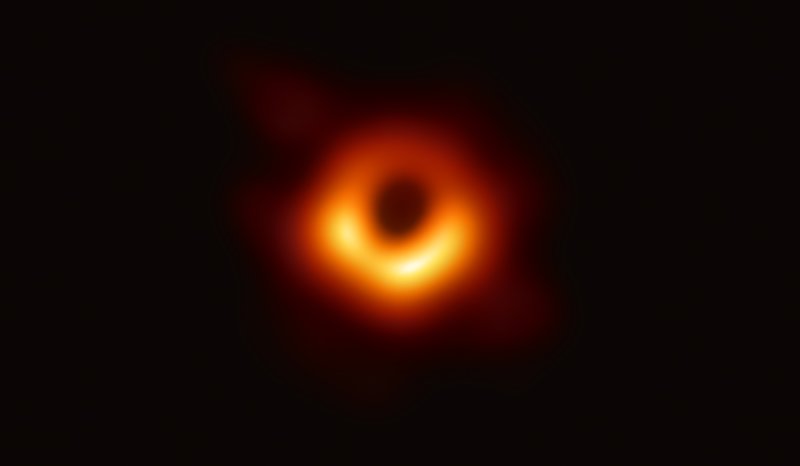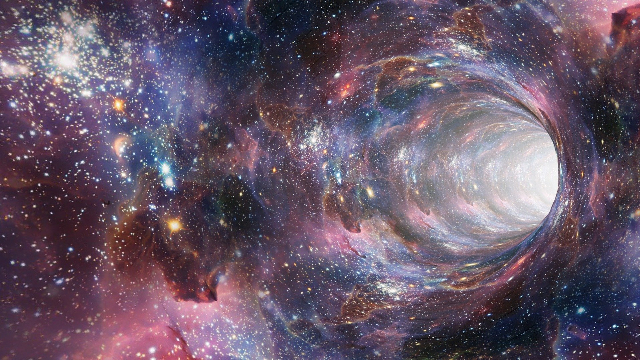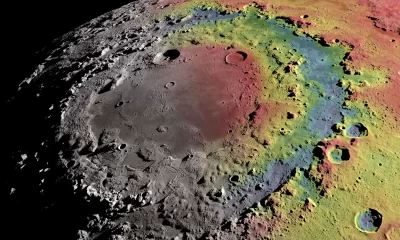Gossip
This Is the first picture of a black hole — and that's a big, even supermassive, deal
A picture of a black hole is one of those great, self-negating concepts, like the sound of silence, the presence of absence or the lives of the dead. The nature of one refutes the other. But a picture of a black hole has arrived nonetheless — two pictures of two black holes, actually, on April 10, in simultaneous press conferences held April 10 in six different locations around the world.

At those events—planned for Washington, Brussels, Santiago, Shanghai, Taipei and Tokyo—astronomers gave humanity its first look at the black hole at the heart of the Messier 87 (M87) galaxy, nearly 54 million light years from Earth. With that, astrophysics has opened one more tiny crack in the wall of secrets that is the universe:
True to the nature of the science, the picture does not show the black hole itself. The defining feature of all black holes is that they are so dense, generating a gravity field so powerful, that nothing, not even electromagnetic energy—which, of course, includes visible light—can escape their pull. What the pictures reveal instead is the black holes’ so-called event horizons, the swirl of gas and dust and stars and light itself, circling the black hole drain, before they’re sucked inside never, ever to reemerge.
In April of 2017, a global web of eight radio telescopes located in six places—Chile, Mexico, Spain, Hawaii, Arizona and the Antarctic—collectively known as the Event Horizon Telescope (EHT), began surveying the Messier 87 black hole, as well as the black hole at the center of our own Milky Way galaxy, and likely gathered very different data from each.
The black hole at the center of our galaxy goes by the name Sagittarius A*. It has a mass equivalent to about 4.1 million of our suns. While that earns it the sobriquet “supermassive black hole” (more common black holes can be as small as five solar masses), it’s actually something of a pipsqueak as these things go. It measures perhaps 24 million miles across, or about a 50 billionth the size of the galaxy. Trying to take an image of that from the 26,000 light year distance at which the Earth sits from the center of the Milky Way is like trying to spot an orange on the surface of the moon—with the naked eye. The black hole at the center of M87, by contrast, has a mass equivalent to perhaps 7 billion suns, or 1,700 times bigger than our own black hole. But at 2,700 times the distance, it was even harder to make an image of.
One thing that made the work possible was not just the number of telescopes collaborating in the search, but their geographic distribution. The distance among the detectors—especially the 9,000-mi. north-south stretch from Spain to Antarctica—effectively means a collection dish nearly as big as the Earth itself. That allows for an enormous amount of data to be gathered and collated—and over the course of the past two years, it was the collation more than the collection that was the more complicated part. The teams worked independently, sharing no information among themselves about preliminary results, lest they influence or contaminate one another’s data. Only when they were done did they regroup and prepare for the April 10 announcement.
There is scientific serendipity in the fact that two black holes of such radically different scales were within the reach of the EHT detectors, since they provide a much richer mix of data studied together rather than apart. Sagittarius A* is a relatively quiet black hole, with an accretion disk—the ring of matter and energy that orbits the event horizon—that is relatively dim. The black hole still has the power to swallow stars, it’s just not swallowing many.
The black hole at the center of M87, meantime, is a monster, sucking in matter and blowing out jets of supercharged particles that approach light speed and extend for 5,000 light years. “It’s a little bit counterintuitive to think a black hole spills out something,” astrophysicist Thomas Kirchbaum of the Max Planck Institute in Germany told Science News in the run-up to the announcement. “Usually people think it only swallows something.”
In truth, the particles that make up the jets are not being spilled by the black hole at all, since they never fell in to begin with. Instead they were almostsucked in, but instead were accelerated by the violent energy in the vicinity of the hole and blasted away. That macro understanding of how the jets work is nothing like the much more detailed, much more precise analysis that can be done now with imagery of M87 in hand.
















